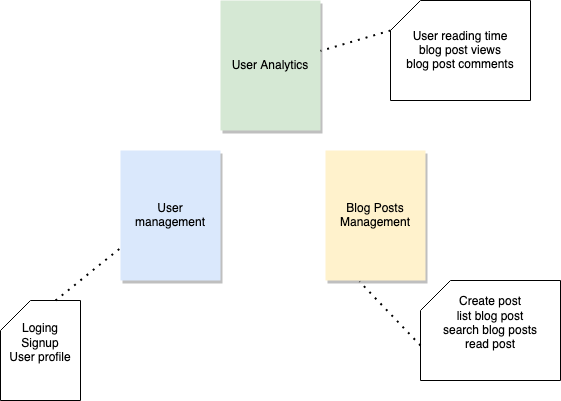Separation Of Concerns (SOC)
- this one is meant to help you group functions or modules into a service
- The point being if you’re designing a system that deals with several concepts, you want to group your functions into modules depending on what they have to deal with
Example
-
consider a blogging platform, a simple one, where your users can publish their blog posts
-
You could have a single system taking care of everything (user management, blog posts, analytics, and so on)
-
But if you want to follow the SOC principle, you could end up with something more in the lines of the following

- This is of course a very crude representation of the architecture, but the point being you can separate different responsibilities into different modules, this in turn allows for benefits such as
- Scaling individual functionalities becomes easier
- You can now easily consider scaling your user management module, because it is getting too much traffic, while leaving the rest of the platform untouched
- Making changes is easier now that your code is not tightly coupled
- You can make considerable modifications to how you manage blog posts without affecting any other section of the platform
- Your platform is now more stable
- If one of these modules crashes, then the system can potentially still function, with less features, of course, but the potential is there nevertheless
- Scaling individual functionalities becomes easier
- This is of course a very crude representation of the architecture, but the point being you can separate different responsibilities into different modules, this in turn allows for benefits such as
-
SOC can also apply to API design, library architecture and more
- It’s simply about having control over how you group functionalities in a way that makes sense to the users of those functionalities